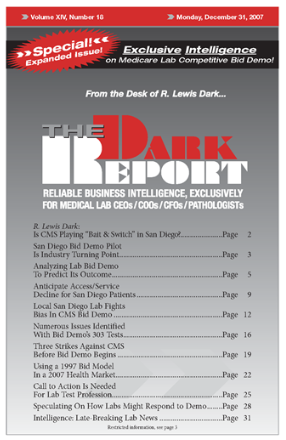CEO SUMMARY: It’s been a long path from concept to implementation for a competitive bidding demonstration involving clinical lab services. It was in the mid-1980s when CMS commenced work on designing such a demonstration. In the 1990s, RTI International continued development of the concept and, in 1998, it published a paper on the plan it …
Using a 1997 Bid Model In a 2007 Health Market Read More »
To access this post, you must purchase The Dark Report.


